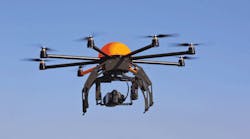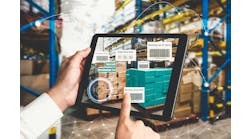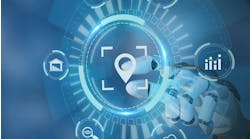Some recent attention-grabbing headlines may influence the design of your distribution network in the near term:
• Drone technology could make it possible to deliver a package in 30 minutes;
• Anticipatory shipping could send products to fulfillment centers near customers deemed most likely to purchase them; and
• Google's expansion of its same-day delivery service to the general public.
Delivery by Drone
Amazon's Jeff Bezos made headlines, and was the butt of a lot of jokes, in December when he claimed that in the next five years, drone technology could make delivering a package in 30 minutes possible. Imagine unmanned Octocopters touching down on your front lawn delivering something you ordered after watching a TV commercial.
While there are many design hurdles drones would have to overcome before they could stand a chance of delivering for Amazon (extended battery life beyond 30 minutes, the ability to deliver orders weighing more than five pounds and the ability to fly in heavy precipitation), the biggest hurdle drones will have to overcome is approvals from the Federal Aviation Administration. There is speculation that it could take a while. In fact, it is likely drones will begin flying in Dubai to deliver government documents to citizens before they start delivering for Amazon.
In terms of how drone delivery would affect distribution networks, Bezos said that drones would have a ten-mile radius, so deliveries would be geared toward customers located in large cities near current Amazon distribution sites. As such, the use of drones would neither increase nor decrease distribution facilities in the short term.
Your Non-Order Awaits
Anticipatory shipping is the process by which Amazon will ship products—either directly or to a shipper's hub—before a customer actually hits “buy” online. Unlike drone use, Amazon already has a patent for anticipatory shipping and will base its shipping patterns on a customer's previous order, product searches, wish lists, shopping-cart contents, returns and even how long an Internet user's cursor hovers over an item.
In essence, Amazon will leverage its trove of customer data to not only stage items in the areas where they expect them to be ordered from, but according to the Wall Street Journal, Amazon "may fill out partial street addresses or zip codes to get items closer to where customers need them, and later complete the label in transit."
Although Amazon has not commented on how much more quickly orders will be fulfilled through anticipatory shipping, it is predicted that this will aid order flow, particularly when a high volume of orders are placed prior to a new book or DVD release, for example, when some customers would typically experience wait times.
What remains to be seen here is how accurate this process will be—products sent to a specific warehouse, or even queued up for delivery to a specific street address where they may never be ordered from, and may ultimately have to be shipped back to a central fulfillment center, or gifted to the customer who never ordered the item (as the patent suggests). If this model proves successful and customers do receive their orders ahead of when they would expect them, it will be a customer service win that will justify the resources put into expanding the warehouse network, gaining rights to the patent and analyzing the customer data to make anticipatory shipping possible.
Google's Same-Day Game
While both of Amazon's futuristic initiatives are geared towards expediting deliveries for the general public, Google's same-day delivery service (Google Shopping Express) has been rolling out slowly, first in the Bay area and then in late January in the Santa Monica area to Google employees and local applicants first, but as a service they hope becomes publically available down the road.
The allure of Google's service is to compare prices from different retailers (15 retailers, including Office Depot, Walgreens, Whole Foods and Target, were part of the Bay area test), pick a delivery time window, and receive an order the same day. This can be paid for via monthly membership or at a cost of $4.95 per delivery.
If USPS suspending same-day delivery (as of March 1) due to a lack of interest is any indication, the demand to receive items the same day they were ordered is not something consumers are willing to pay for. A recent survey conducted by the Boston Consulting Group supports this claim—it found that 74% of the 1,500 U.S. consumers surveyed prioritize free delivery over receiving their items the same day.
Whether we are looking at same-day delivery, expedited shipping via drones or anticipatory shipping, all three “futuristic trends” have the same goal—getting an order to the customer faster. But, regardless of how quickly an order is delivered, the last thing the customer will remember is whether or not the correct item was delivered on time, in perfect condition.
Shippers need to prepare their infrastructure for any initiative they adopt. As the above trend-setters will tell you, many details need to come together in making these “trends of the future” a reality.
Mike Lee is CEO of Airclic, a provider of mobile electronic proof-of-delivery software.



